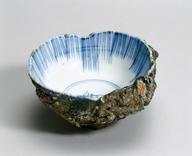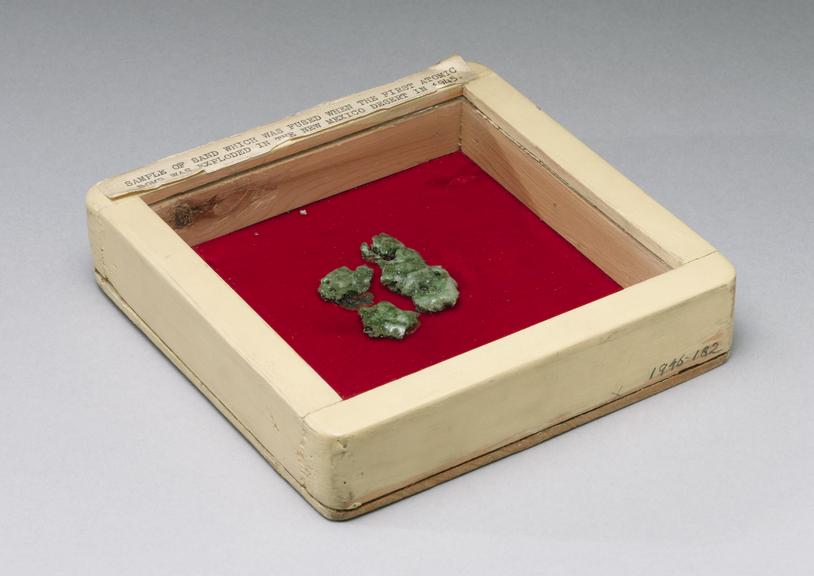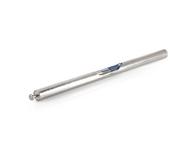

Specimen of sand melted by the explosion of the first test atomic bomb, New Mexico, July 1945
- Made:
- 1945 in Alamogordo








Specimen of sand melted by the explosion of the first test atomic bomb, Trinity site, Alamogordo, New Mexico, USA, tested at 5:29:45 a.m. Mountain War Time on 16 July 1945, green glassy substance formed is known as 'Trinitite'.
Details
- Category:
- Nuclear Physics
- Object Number:
- 1946-182
- Materials:
- fused sand
- Measurements:
-
frame: 150 x 150 x 30 mm
- type:
- trinitite and mineral specimens
- credit:
- Professor P.B. Moon.




